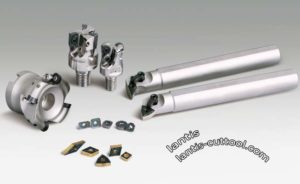To share a comparable customer topic.
Have you ever, when you want to take a taxi, you tell the driver, to go to a closer place, only a kilometer or two, but the driver shakes his head and says, no, no, no.
As you watched his taillights go by, he drove off in front of another passenger.
I think we all know why?

The taxi driver may have met passengers going to the airport or the train station ahead of him, so it’s more profitable than going within a mile or two of these places.
From this small phenomenon in life, we all know that taxi drivers know to find their precise customers; he can get the maximum income.
So what does this make sense?
What does it look like in our sales process?

Let’s say you’re a seller of a quality-oriented product, and you act like you’re rushing in, you’re eager to get an order, and you happen to have a price-oriented customer, you know, or you think back, what customers love to say: Please give me your best price.
He’s always saying your prices aren’t reasonable, or that you’ll never live up to his expectations.
Why? Because you are a quality-oriented product. You have no price advantage; your advantage is in your quality or your technology, and so on.
Because of your technology and quality, your cost can not be done.
So your price can’t go on.
If you continue to grind with the customer, the result is likely to be a meager price to the customer, or the customer eventually did not deal at all.
Mismatched clients are likely to cause us pain.
When your customers don’t match, you get bored and doubt yourself, doubt Your Life, doubt your company, etc.

Let’s look at another case, CLIENT A and client B. Customer a gives you the order, and customer B, just like the case list mentioned above, you give him a lot of preferential policies to close the deal. What will customers do if one day customer a knows? Oh, my God, I was so beautiful to this vendor that I didn’t get the best support. Instead, he gave the offer to a customer who wasn’t responsive. Customer a might think, am I barking up the wrong tree?
So a client that doesn’t match will also result in the loss of our existing clients.
Combined with the above, it’s hard to maximize our value with a mismatched customer.
So how do you find a match?
To create a client portrait, how do we create a client portrait?
The first step is to build a customer profile based on our most significant competitive advantage.
Think about what these competitive advantages are that customers want, and they must want.
If you’re good at design, you need to find customers who want it. If you’re good at quality or technology, you need to find customers who want quality or technology, not price-oriented customers.
The second point, uh, is to look at your past transaction data, find out the standard features of a type of customer, look at the level of profit, or the degree of cooperation, or the dealer or large terminal,
and then we’re going to paint our client’s portrait based on these two dots.

The first business customer portrait, is what kind of a business, this business with you the probability of a higher transaction.
The second, end-user profile, is what your B-end customer’s customer base needs are like
Third, is the decision-making team portrait, the decision-making team will make what kind of decisions, the decision-making team impact factors?
The above three customer portraits, for the first, we can say we are suitable for the enterprise, the second, uh, is that we better match your customer base, decision-making team, uh, we can use a more matching social style to match.
How do we draw these three portraits?

It’s GonNa take three numbers
First: METADATA, including CUSTOMER SHAPE, purchase volume, sales, size, this is available on the network above
Second: Behavioral Data; that is, what is the most commonly used sales channel for a customer, and what kind of transaction is more acceptable; if you are a service provider, the client you are looking for must be able to accept a service fee or design fee.
Third: Attitudinal Data; what is the customer’s preference, for example, if it is quality-oriented or if he wants to be served by a middleman.
We can’t just stay at the product level; we have to analyze what kind of customers need us more, and what kind of customers we can quickly reach a deal with

Leave A Comment